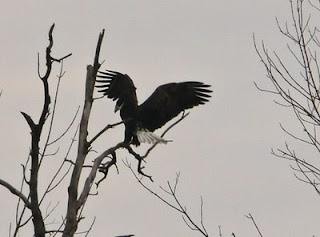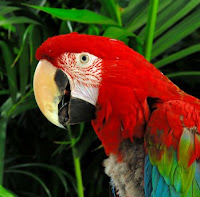
Temperate forest have four distinct seasons, cold winters, cool rainy springs, hot moist summers, and cool falls. In some places the winters are very mild. The flora(trees & plants life) in these forest varies a little; they are made up of mostly hardwood like oak, hickory, beech, hemlock, maple, cottenwood, elm, willow, evergreens and basswood. During the winter all trees and plants lay dormant. They also contain many shrubs, moss, ferns and flowering herbs. Their fauna(animal life) deer, fox, black bears, bats, birds, reptiles, fish and insects, small rodents, etc... These are the forests we see most in the United States, they are also found in eastern Canada, Europe, China, Japan, small parts of South America and parts of Russia. There are many subdivisions under the temperate forests, they are moist and dry conifer/evergreen forest, temperate broad leave forest and the mediterranean temperate rain forest-they only differ in the climate. I will focus my attention on a particular temperate forest in southern Indiana known as the Indiana National Forest. It is the only forest I've ever went to and there is a lot of neat things to do there.


 Hoosier National Forest is the home of 50 mammal species, 142 bird species, 36 reptile species, 28 amphibian species, 125 different types of fish and more animals are being discovered every year. The most common animals to see are the white-tailed deer, fox, woodchucks, opossum, rabbits, turkey, waterfowl and many birds. This is also the home for bald eagles, grey bats, Indiana brown bats, rough pigtoes and fan shell mussels which are all endangered species. Most of the trees in this forest are wallnut, oak, pine, ash and maple. Some are very ancient over 200-400 years old. Some of these trees are in danger due to the speard of Ash Borer disease. Ash borer is a beetle that bore holes in trees and hollows them out.
Hoosier National Forest is the home of 50 mammal species, 142 bird species, 36 reptile species, 28 amphibian species, 125 different types of fish and more animals are being discovered every year. The most common animals to see are the white-tailed deer, fox, woodchucks, opossum, rabbits, turkey, waterfowl and many birds. This is also the home for bald eagles, grey bats, Indiana brown bats, rough pigtoes and fan shell mussels which are all endangered species. Most of the trees in this forest are wallnut, oak, pine, ash and maple. Some are very ancient over 200-400 years old. Some of these trees are in danger due to the speard of Ash Borer disease. Ash borer is a beetle that bore holes in trees and hollows them out.






 Moving on to animals, the Amazon Rain forest has the largest diversity of animal species in the world and 90% of their animal species are insects. Most of the other animals that live in this rain forest are arboreal which means they live and spend most of their time in the trees. Some well known animals living in the Amazon Rain forest are; Harpy eagles, Vampire bats, Toco toucans, Blue Dart frogs, Woolly monkeys, Squirrel monkeys, Orange tree boas, Jaguars and Anteaters. These are just a few because there are way to many to list them all (impossible).
Moving on to animals, the Amazon Rain forest has the largest diversity of animal species in the world and 90% of their animal species are insects. Most of the other animals that live in this rain forest are arboreal which means they live and spend most of their time in the trees. Some well known animals living in the Amazon Rain forest are; Harpy eagles, Vampire bats, Toco toucans, Blue Dart frogs, Woolly monkeys, Squirrel monkeys, Orange tree boas, Jaguars and Anteaters. These are just a few because there are way to many to list them all (impossible).


























